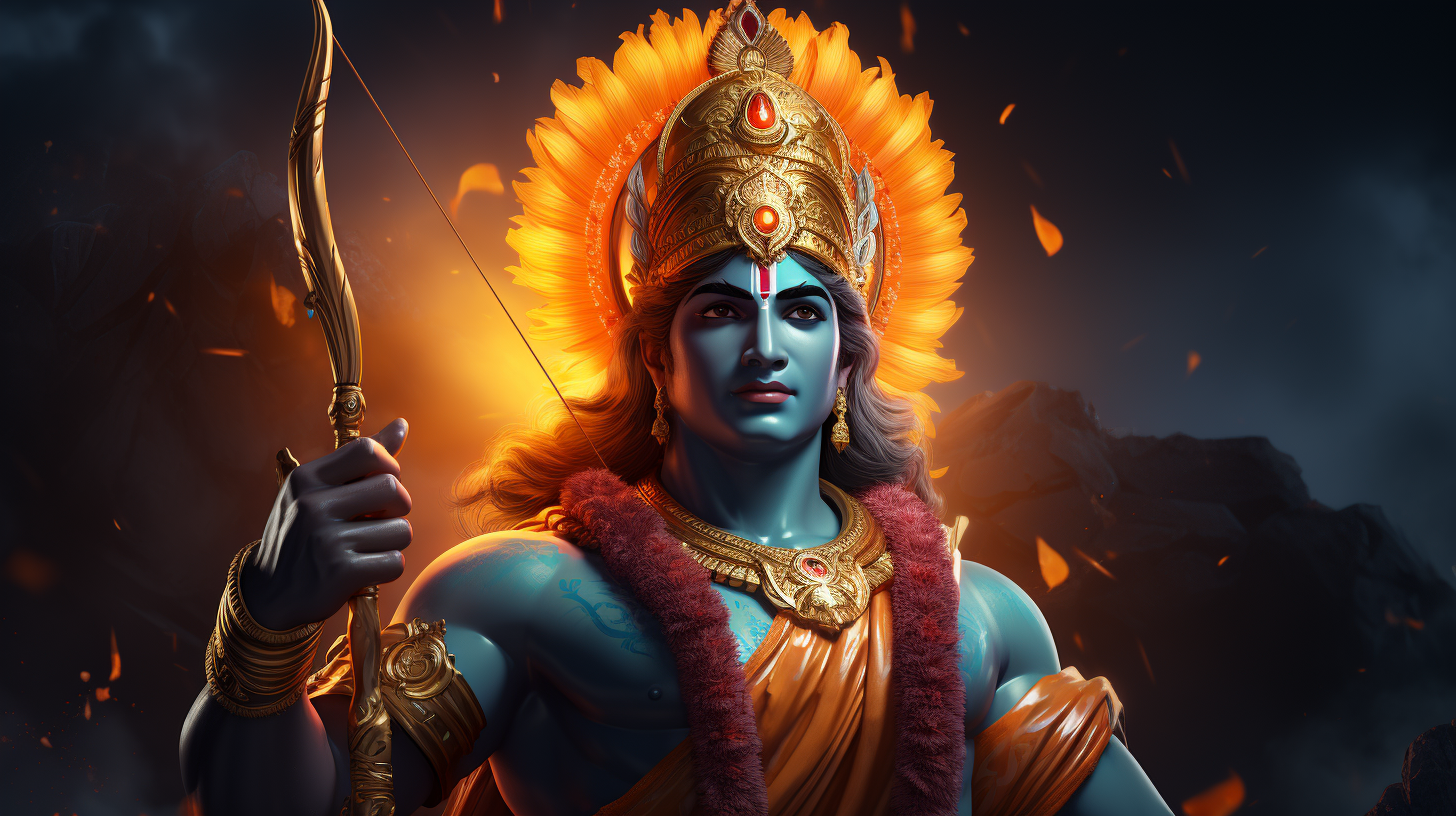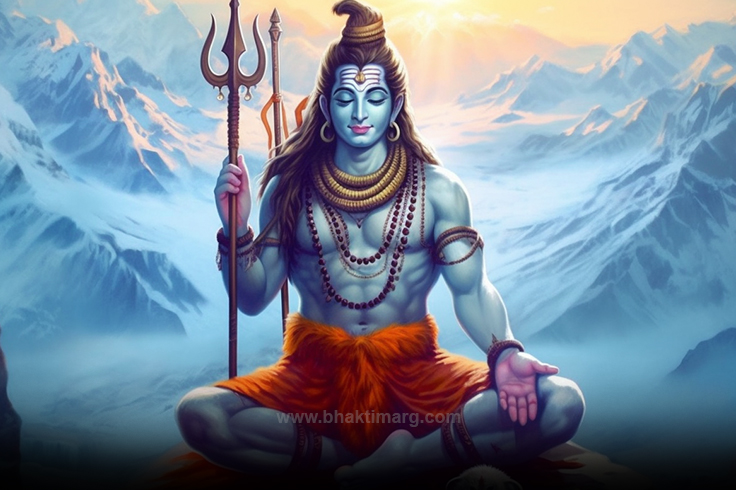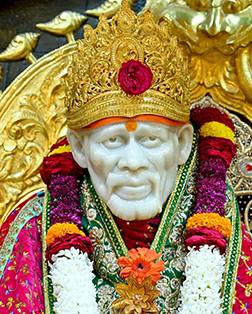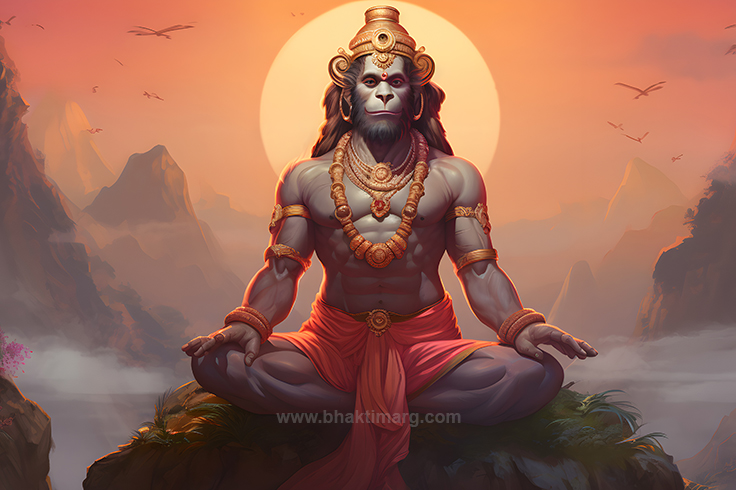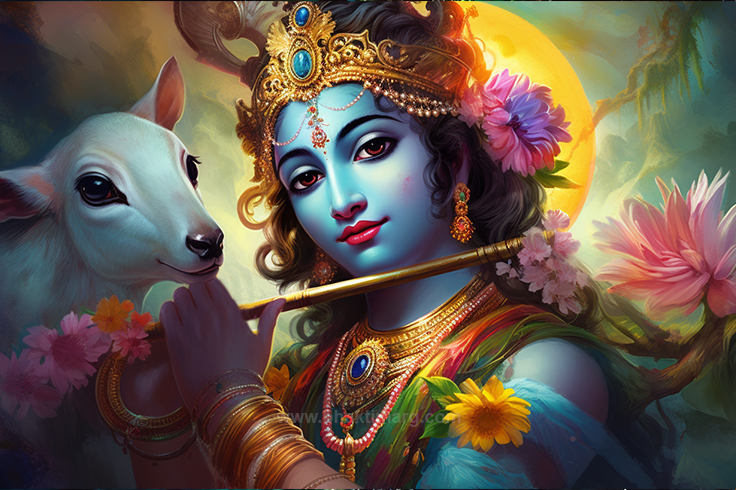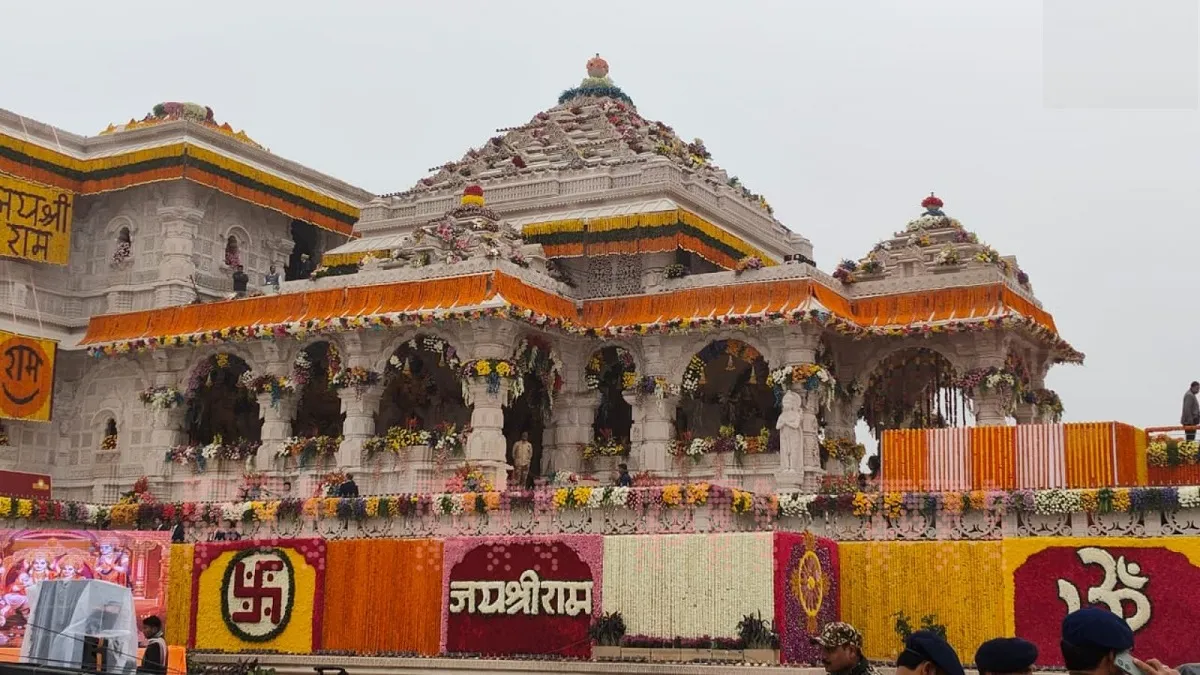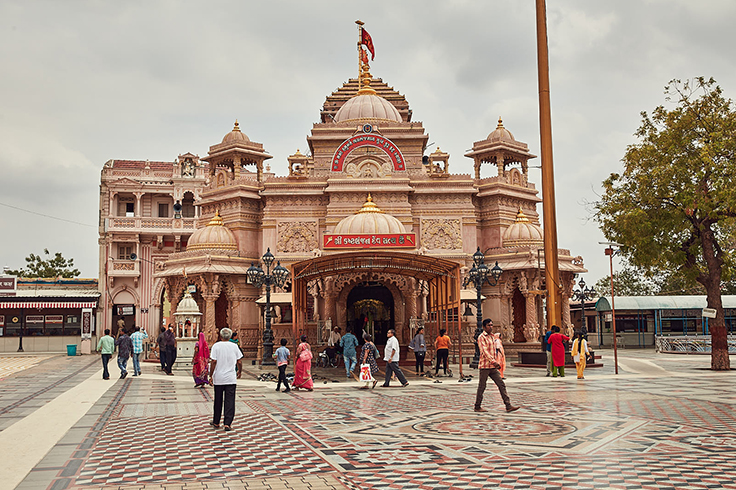
How did Ratnakar become Sage Valmiki?
The story of Sage Valmiki is a very inspiring tale in Hindu tradition. He is remembered as the author of the Valmiki Ramayana. A work that shaped the spiritual life of India for centuries. But Valmiki lived a very different life before becoming a saint.
The question often comes to mind: Who was Sage Valmiki before he wrote the epic? His journey from a feared bandit to a revered saint holds deep lessons. His transformation shows that even the hardest heart can turn towards God.
The history of Valmiki is not just a set of old stories. It is a living reminder that people can change when guided in the right way. The story of Valmiki lives on through scriptures, songs, and the voices of saints.
It is more than history. It is a path walked in faith. It inspires people to trust the power of change. It shows that no matter how far someone has strayed, they can return. His life proves that faith, patience, and honest effort can turn even the darkest past into a better future. That’s why his story still moves people walking the path of devotion.
Before the Sage – The Life of Ratnakar

Valmiki was known as Ratnakar before he became a saint. His early years were far from the life of a poet or saint. He was born in a poor family and grew up facing hardship from a young age. Survival was a daily struggle.
Ratnakar turned to robbery to support his family when he grew older. The forest became his home. He would stop travellers and take what they carried. This life made him feared, but it also trapped him in a cycle of sin. The Valmiki life story shows that even a man deep in wrong actions can find a way back.
According to the history of Valmiki, he believed his crimes were justified. He thought this as he was providing for his loved ones. But he never thought about the burden of his deeds. The story of Valmiki tells us how being unaware of one’s deeds affects the soul.
Ratnakar’s name spread in the forest. No one dared to pass without fear. But inside his heart was restless. Somewhere deep within, the seed of change waited. This part of his life matters because it shows that the lowest point can spark something great.
This shows that no one is ever beyond change. Ratnakar’s life proves that even the hardest times can open into a new beginning. It teaches that when the heart is ready, real change is possible, no matter how lost someone seems.
The Turning Point – Encounter with Sage Narada

One day, Ratnakar stopped a traveller in the forest. This was nothing new for him. But the man he stopped was no ordinary traveller. It was Sage Narada, a wandering saint known for his wisdom.
Ratnakar pointed his weapon at Narada and demanded his belongings. Narada did not show fear. Instead, he calmly asked Ratnakar why he lived by harming others. The question seemed simple, but it went straight to Ratnakar’s heart.
Narada asked if Ratnakar’s family would share his sins, just as they shared the benefits of his crimes. Ratnakar was confident they would. But Narada told him to go home and ask. When Ratnakar did, he was shocked. His family said they would share his food and shelter, but not his sins.
This truth broke something inside him. For the first time, he felt the weight of his wrong actions. Narada then taught him to sit in one place and chant the word “Mara.” As he repeated it, the sound slowly turned into “Rama.” Here, we also see why is Sanskrit important in Hinduism. The vibration of Sanskrit words carries deep spiritual energy, and even one sacred name can transform a life.
That meeting planted the seed of a new path. Ratnakar began his long penance, stepping into a journey that would lead him to become Sage Valmiki.
Transformation into Sage Valmiki

Ratnakar followed Sage Narada’s advice. He sat in one place and began chanting. Days turned into months, and then into years. He never moved. He didn’t eat or speak to anyone. His body became as still as a stone. His mind was totally focused on the divine name and pushing out all other thoughts. In fact, the forest around him grew silent. Only heard was his constant chant.
As time passed, ants built a huge anthill around him. It covered his body completely. Here’s a fact: in Sanskrit, an anthill is called “Valmika.” Therefore, when his penance ended, the saints and gods gave him a new name. They called him Valmiki. It means ‘the one who came out of the anthill.’ What this really means is it wasn’t just a new name; it was a brand-new life.
The man who once lived by violence now lived by truth. He found deep peace in his heart. He spent his days in devotion and service. Because of this, the Valmiki life story teaches us a big lesson. It proves that no past is ever too dark for a fresh start.
Valmiki’s change is proof that surrender can open the door to grace. Just like the Ram Raksha Stotra or Sri Ram Aarti lifts the heart toward God, Valmiki’s penance lifted him from being a sinner to a saint. His example teaches that spiritual light can rise even from the deepest shadows. It also shows us that every person who feels lost has the power to return to their good self.
Now, he was ready to give the world a great treasure: the Ramayana. Valmiki’s transformation reminds us that real change comes from within. It requires patience and discipline. His journey shows us that no matter how far someone has strayed, the path back to truth is always open. Every person has the strength to rise above their past.
His life is a beacon for all who seek a better way. His story proves that devotion can heal even the deepest wounds. Valmiki’s example encourages us to keep moving forward, no matter the obstacles. His legacy is a powerful message of hope and the possibility of renewal for everyone.
The Birth of the Valmiki Ramayana

After years of deep meditation, Sage Valmiki lived in peace. He went to the river to bathe one day. There, he saw a pair of birds singing happily. A hunter’s arrow suddenly struck the male bird, and it fell to the ground. The female cried in grief. This moment sparked something new within him. A powerful realization that poetry could capture deep truth and feeling. From that day, Valmiki knew his words would carry a message far beyond the forest.
The scene overflowed Valmiki’s heart with sorrow. Words arose from him in a meter he had never spoken before:
“You will find no rest for endless years,
O hunter, for you killed one of a pair in love.”
This was the beginning of the first shloka of Valmiki. It was also the origin of Sanskrit poetry. Challenged by the intensity of his emotions, Valmiki understood that poetry was capable of transmitting truth and feeling in a manner that went to the very soul.
Soon, Lord Brahma incarnated before him. The creator granted divine vision to Valmiki. He asked him to write the story of Lord Rama just as it had happened. This is how Valmiki writing Ramayana, began.
Valmiki never saw Rama himself. But with Brahma’s blessings, he could see all the happenings clearly. With this gift, he went about composing the Ramayana by Valmiki. He composed it in Sanskrit and gave us the original Valmiki Ramayana, the Indian tradition’s first epic poem.
Some of the important facts about this holy work:
- The story of Valmiki Ramayana is structured into seven books. They are referred to as “Kandas.”
- Rama’s life from birth to his last departure from the world is narrated.
- The verses are written in the shloka meter so that they are easily memorized.
- The Ramayan in Sanskrit written by Valmiki, was the initial base for numerous versions in other languages.
- Valmiki Ramayana Hindi popularized the book among the masses.
- The Sanskrit Valmiki Ramayana remains studied by scholars and followers.
Valmiki’s work is more than a story. It is a guide to dharma, devotion, and moral living. It shows the ideals of truth, duty, and compassion. Later saints like Sant Tulsidas took inspiration from it to write the Ramcharitmanas. Hymns like the Shree Hanuman Chalisa and stories of Hanuman’s role in the Ramayana also came from the seeds planted in Valmiki’s epic.
The Ramayana’s impact is not limited to books. It exists in songs, plays, and festivals. Festivals like Dussehra: Lord Rama’s victory continue to recount the theme of good conquering evil.
By sharing the world the Ramayana, Valmiki transformed his spiritual metamorphosis into something given to the whole of humanity. It is still a source of strength and piety for everyone today, as it was millennia ago.
The Ramayana’s Spiritual Message and Impact

The Valmiki Ramayana is more than a history of kings and wars. It is a manual on how to live the life of virtue and devotion. There is a lesson in every segment of the tale.
The focal point is Lord Rama. He is depicted as the ideal son and brother. Also, the best husband and king. His life instils the importance of the truth and self-restraint. His decisions prove that dharma must be adhered to despite suffering.
Sita’s path personifies strength and inner innocence. Lakshmana’s devotion exemplifies the beauty of self-sacrifice for a loved one. Bharata personifies humility and respect for duty. These instances continue to motivate people to live with integrity.
Hanuman’s role in the Ramayana is yet another lesson to ponder. He was completely devoted to Rama. He applied his strength, wisdom, and bravery only in servitude of his Lord. This attitude later influenced hymns such as the Shree Hanuman Chalisa, which is read every day by millions.
Over time, many saints and poets drew from Valmiki’s work. Sant Tulsidas made Ramcharitmanas accessible to the common people in their language. Hymns such as the Sri Ram Aarti and Ram Raksha Stotra came to be sung in homes and temples. This kept Rama’s name alive in daily life.
The Ramayana is not confined to books or worship. It’s a part of celebrations in culture. On Dussehra: Lord Rama’s victory, whole cities and towns assemble to see the vanquishing of Ravana. The effigy’s burning serves as a reminder that greed and pride will always defeat virtue and truth.
Ramayana is not history but a spiritual guidebook. It illustrates that devotion and bravery can triumph over anything. Even today, the teachings of the Ramayana guide those who want to live with purpose and faith.
Valmiki provided the world with more than a poem by writing it. He provided a path leading the heart closer to God.
Valmiki’s Timeless Lesson for Devotees

Valmiki’s life is one of the clearest examples of personal transformation in Indian spiritual history. From Ratnakar, a feared bandit, he became the Adi Kavi, the first poet. The one whose words still guide people today. His journey shows that change is possible for anyone, no matter their past.
In the tradition of mythology, this is an effective lesson. The one of turning the heart in the direction of the divine through remembrance, service, and love. This is entirely reflected in the life of Valmiki. He heard the message of a saint, internalized it, and surrendered himself utterly to the name of the Lord.
His transformation was not abrupt. It occurred through patience, self-control, and profound introspection. By narrating the life of Rama in the Valmiki Ramayana, he presented a manual for living with truthfulness and kindness. He depicted that devotion may be exhibited in numerous ways:
- With words of encouragement and motivation.
- Through actions that follow truth and kindness.
- Through service offered without expectation.
- Through humility and a heart open to learning.
His life inspires people to believe in second chances. It reminds us that past mistakes that have occurred do not define your future. His example encourages reflection on oneself. It focuses on the fact that humility and steady effort are essential to a higher purpose.
The journey of Valmiki from darkness to light is not just history. It is a timeless reminder that every heart can find its way home.
Valmiki’s story continues to inspire countless seekers on their spiritual path. It shows that no one is beyond redemption, and every soul holds the power to transform. His life urges us to embrace patience and sincerity, reminding us that real change is a gradual process. Above all, Valmiki teaches that devotion, when combined with humility and steady effort, can break any chain. His legacy remains a guiding light for those searching for meaning and peace.
Valmiki’s Relevance in Modern Times
The lessons from Valmiki’s life are not bound to ancient history. In today’s world, where people struggle with stress, doubt, and moral dilemmas, his journey offers a living example of change through self-awareness and discipline. His transformation shows that no matter how deep the mistakes, a shift in direction can rebuild one’s life.
Just like Ratnakar found peace through chanting “Rama,” people today can discover calm through mindful practices, prayer, or meditation. His writing of the Ramayana teaches that storytelling can shape values and inspire action. Teachers, parents, and leaders still turn to his verses for guidance on honesty, courage, and compassion. Valmiki reminds us that spiritual growth is not a quick fix; it’s a patient journey. His story encourages people to start where they are, take small steps, and believe that the light is always within reach, even in the darkest moments.
Conclusion
Ratnakar’s path to Sage Valmiki is a tale of transformation and hope. It is a reminder that if we start the transformation, it is never out of reach. Ratnakar was adrift in a sea of fear and anger. But through patience and faith, he was transformed into the great poet. He bestowed the great Ramayana upon the world.
The life of Valmiki teaches us that the worst past does not determine the future. It is all about the decision to move towards the light. His deep meditation brought with it a new way of life.
He taught eternal lessons on duty and courage through his epic poem, the Valmiki Ramayana. His work inspires millions to walk the path of truth and devotion.
The story of Valmiki tells us not to lose hope. Even when there are failures in our way. Transformation is not easy, but it can always be achieved. His life proves that defeat and steady effort can bring peace and meaning. The story of Valmiki is a witness that all souls can find their way back home. This is the true treasure of his story.





